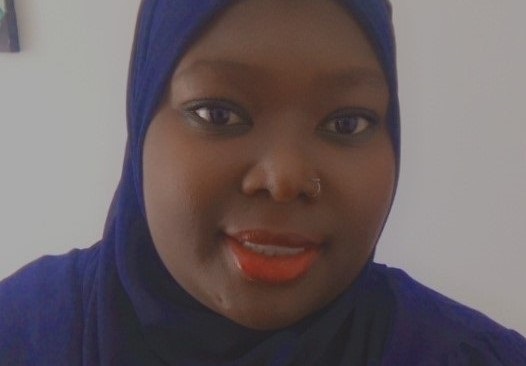
By Halima Imam / Esther Dibal
Her birth isn’t as well received as that of the male. Visitors come in their numbers to ‘rejoice’ with her parents, carrying pretentious smiles smothered by sympathy of having welcomed a girl child. She is exchanged from hand to hand and wrapped with the gentle arms of her parents; oblivious of what awaits her. Like a cup of hot coffee served on a chilly morning to provide warmth, her patriarchal society serves her. The beginning seems like the hunky dory period of a couple’s marriage, the honey moon that is served with no bone, just flesh and flavour, a reality every couple wishes to be trapped in. Then the true picture is unveiled.
On her journey to becoming a woman, the girl child is programmed by a ‘set of rules’ which is aimed at making her function within a stereotyped space-the formation of a mindset that makes her act in a certain way, of which anything short makes her a reproach to her father. One word that readily comes to mind to summarise the upbringing of a girl, is subservience- From home, to the society, to the workplace, and finally to her marital home, where it is termed ‘her husband’s house’.
History has recorded degrees of oppression and disparity towards women in all facets of life. Without need to go too far, a family setting presents such scenario where gender favouritism is upheld. Such case scenario is parents who struggle to take their kids to school, and because there aren’t enough funds to send everyone, a choice is going to have to be made. As expected, the girl is made to concede to let her brother(s) go to school, because ultimately, her life is to end up as a mother and a wife, which to her should be a trophy of life, but there is more to the girl child.
A girl child is three times likely to get aborted than a boy, in Asia, especially in India a woman carrying a female child is likely to get her pregnancy aborted by her husband. Girl children that do not get aborted are likely to not go to school in many parts of the World. Statistics shows that 31 million girls Worldwide are unenrolled from primary schools; 34 million adolescent girls are unenrolled in middle schools. 17 million girls are expected to never even enter school at all, and over a quarter of women aged 15-24 today never completed primary schools, that is 116 million women. Nigeria, Ethiopia and Pakistan are said to have over 1 million girls not in school.
According to UNESCO, 52 million girls have no access to education in Sub Saharan Africa, girl’s enrolment rate in primary school is 75%, and completion rate for lower secondary school is 31%. Women before the 16th century were sort of been footnoted, it wasn’t even until the 20th – 21st century before a reasonable amount of countries gave women their rights to vote, shockingly. In the progressive era women demanded to be seen as full citizens of their respective countries, women needed men to understand that they do not just exist to be their joie de vivre. Women had to prove that they get to have their own joie de vivre.
In Canada’s early days voting was considered a privilege, not a right, affluent men, women with property alone could vote, in 1867 all women were then excluded from voting, “may it be proclaimed and decreed that no woman shall have the right to vote at any election”. In the 1880s and 90s many saw women’s suffrage contrary to biblical teachings. They believed that a woman’s place was in submission to a man. Men at the Ontario legislature greeted every bill wanting to give women rights to vote with laughter and scorn. A premiere of Ontario James Whitney in 1911 said “women’s suffrage is a matter of evolution and evolution is only a walking out of Gods laws”.
Female landowners in the rural districts of Friesland were allowed to vote during elections in 1689, in 1718 female taxpayers who were members of the city gilds were allowed to vote in local elections and in 1772 at the general elections. In 1756 a woman named Lydia Taft was the only female allowed to vote in a town hall meeting, in the U.S.A while still under British crown. In the 1830s it was Pitcairn Islands, Hawaiian Kingdom in the 1940s, Tuscany in 1848, New Granada Republic (Colombia) granted suffrage in 1853, South Australian property owning women were allowed to vote in 1861, Literate women in Argentina were allowed to vote in 1862. Many countries gave franchise to women in the 90’s including the U.S.A.
Not until 2001 did the women of Afghanistan gain their right to vote, Oman was in 2003, Kuwait and Iraq was in 2005, U.A.E was in 2006. Saudi Arabia had introduced along with the right to run for municipal elections in 2015. There was a pattern for women who were after a long time granted voting rights, even after a long time, they had to be in the elite circle, it was that or no voting rights. Women were seen as too weak and too emotional and some male policy makers said that their emotions will becloud their judgement, forgetting that when it comes to judgement, women give the fairest of verdicts, and so if a woman votes, she will probably choose the better candidate.
According to TRT, in the United States women earn 77.9cents for every dollar earned by men, the numbers come from the uncontrolled or rolled gender gap that measures the salary of men and women regardless of their type of work or seniority. Women of colour make 62 cents to every dollar that the men make. According to a new study women are less likely than men to be promoted to a managerial position, for every 100 men who get promotions, only 79 women get a similar chance, women of colour will be 60 compared to their male counterparts. Those who earn 131,000 dollars in the United Kingdom are men; research proposes that if the current trend continues, the gap will not close for another 36 years even though gender discrimination was outlawed there as far back as the 1970’s.
Women always encounter lack of access to labour market, far more women are said to work in part time jobs than men globally (that’s not only of their own choosing) and a lot of other women are over qualified for the work that they do. The International Labour Organization have called some women ‘discouraged workers’; workers who do not appear in their country’s unemployment statistics because even though they want to work, they do not actively look for a job, which is likely due to the fact that work might not be available for them due to structural, social or cultural barriers. Women being paid less than men is stale news in this day and age, but do we even know that it’s not just likely to be 15% less pay but in some country’s it goes up to 25-30% less pay for women.
Women have way less insurance; receive smaller pensions when they retire, even though they might have been more educated than their male colleagues, lesser pay serves them tiny pensions even though they live longer than men. Globally 21.7% of women provide unpaid care on a full time basis, and mothers are less likely to be employed compared to fathers. In India according to 2019 reports, women’s labour participation rate fell from 30.4% in 1990 to 23.4% in 2019 and in the U.S.A 57.1% women are in the labour force compared to 69.1% of men in 2018. In 2018, the labour force participation rate for working parents with children under the age of 18 was 71.5% for mothers as against 93.3% for fathers.
According to report by W.H.O in 2017, 35% of women Worldwide have experience physical or sexual intimate partner or non-partner sexual violence in their lifetime, that’s 1 in 3. Adult women account for 49% of all human trafficking victims detected globally and women and girls together account for 72%, with girls representing more than three out of every four child trafficking victims according to the UN Women. Four out of every five trafficked girls are for the purpose of sexual exploitation. Women and girls between the ages of 15-49 totalling about 200 million are said to have undergone female genital mutilation in 30 countries that have shown representative data on prevalence.
A staggering 82% of women parliamentarians who had participated in a research carried out by the inter parliamentary union across 39 countries had reported having experienced some form of physiological violence (remarks, images of sexist or humiliating sexual nature, gestures, threats or mobbing) while in office. Most of who cited social media as the channel used. Death threats, rape, assault or abduction threats were thrown at 44% of the 82, that’s both for them and their families. 65% subjected to sexist remarks, primarily by male colleagues in parliament, from within their own party or from opposition political parties.
Sexual harassment and rape have a victim one too many and unfortunately they are women, a crime that makes up two sides of a coin has men wanting to exert power, intimidation and lust on women. Victims of rapes are ravished like animals for the fulfilment of evil lust and desires and the victims scarred for life. What’s sad is that just a tiny fraction of rape cases are reported to the authorities globally and just a few muster the courage to come forward in the first place for fear of being slut shamed or even believed at all. The legal system that stands on innocent until proven guilty and proof beyond reasonable doubt makes it hard for a crime that often lacks witnesses to corroborate a crime and proof might not lie in a physical evidence of the matter.
A 2019 annual report of the National Crime Records Bureau (NCRB) of India reports that rape is the 4th most common crime against women in India. On average it was said that 93 women were victims of rape every day with one third of them as minors, and 87,924 women had registered cases of sexual harassment, an average of 241 a day. On a daily basis an average of 28 women are said to be burnt daily in cases registered as something called ‘dowry deaths’. On many occasions cases of women and girls raped to death or burned after the heinous crimes makes International and National news headlines in India.
Child marriages, forced marriage, shaming a married woman for not giving birth ‘early’ or even at all are situations that millions of women have found themselves in many parts of the World, situations that do not need official statistics because most of us have the numbers in our head. The woman is made to bear the brunt of the ills of society; she is blamed for her children’s misdeeds, her husband’s ill behaviours and all that is wrong with her home. The World forgets that in the wisdom of creation, women have been made to teach humanity unconditional love, compassion, tolerance, strength, resilience, patience, kindness and on and on.
We must henceforth concentrate on the male child, inculcation of good values, fairness and justice in the men will go a long way in mitigating and eventually eradicating the women ‘inferior’ status in the hearts of men, time and again women have proved that they are better than the World thinks of them. We have proved to be great at everything; we have taught many people how a country should be run, we have raised our voices to injustice, women have proved to be better managers of whatever situation. Women must be respected, empowered and allowed to grow in every society that wants to advance and eventually want their place in history. The World must replace the female vulnerability with empowerment for a speed up on the development and advancement process.
Halima Imam / Esther Dibal
Founder (Climate Action Team)
Twitter: @sadee_eemam
The views expressed in this article are the author’s own and do not necessarily reflect the editorial policy of Sky Daily




































